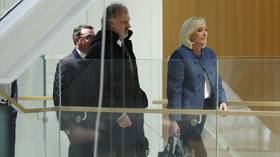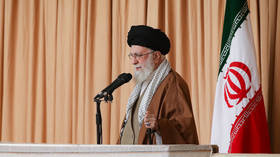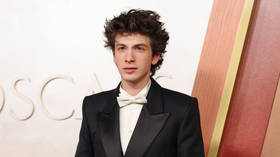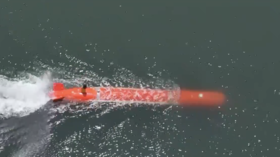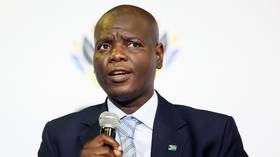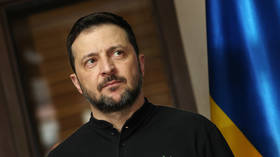‘Space exploring species’: Returning NASA astronaut grew 2 inches in orbit
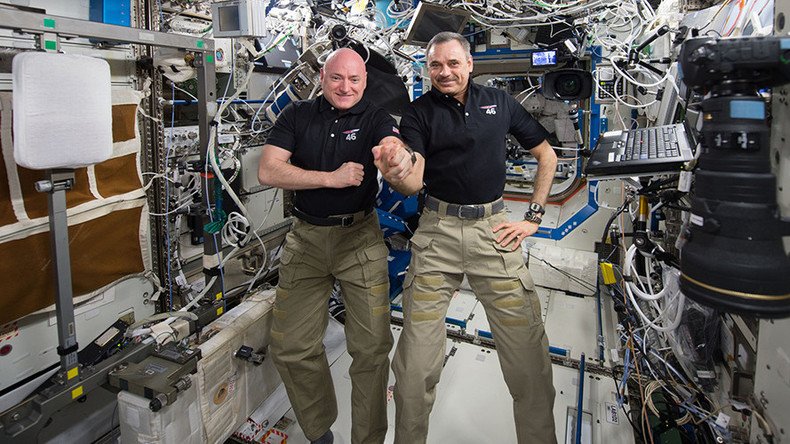
Spending nearly a year on the International Space Station, a Russian and an American astronaut underwent tests on how the human body reacts to a long-duration spaceflight. A first noticeable change for the returning NASA astronaut Scott Kelly was that he had grown 2 inches.
NASA explained the change in an astronaut’s height is a feature of space travel familiar to the agency. Without the full strength of gravity pressing down on gel-filled discs between the vertebrae, the human spine expands and lengthens, the agency explained. It is known a temporary side effect of spaceflight.
NASA astronaut Scott Kelly is finally back home in Houston with his family and swimming pool: https://t.co/wunNwTczZB
— The Associated Press (@AP) March 3, 2016
Kelly, 52 and Russian cosmonaut Mikhail Kornienko, 55, spent 342 days on the International Space Station to help measure the effects of long-term spaceflight on the human body – specifically, how the body copes with zero gravity and cosmic radiation. Scientific tests explored seven aspects of the human body under space conditions, such as how space affected visual impairment, motor skills, psychological effects, metabolic changes, microbial, mobility and physical changes.
.@StationCDRKelly is home after a historical #YearInSpace! Hear his 1st thoughts, plus hear from @DrBiden & others: https://t.co/0pdYOjp7bq
— NASA (@NASA) March 3, 2016
With zero gravity the normal load bearing on a human body is absent. It can lead to brittle bones, weak muscles, puffy face and legs, a smaller heart, and balance issues.
Scientists also wanted to explore whether there was an increase cancer risk because of exposure to cosmic radiation, and the health impact of the disruptions to the human body clock due to the absence of a 24- hour day-night cycle in space. The studies will also examine how aging, gene expression, and immune system function may have been affected.
When the pair landed in the Soyuz capsule in Kazakhstan on Wednesday, Kornienko returned to Star City near Moscow, Russia for medical checkups while Kelly returned to Houston for extended tests.
Kelly said it was “amazing” to feel the cold air when the hatch of his Soyuz capsule popped open after touchdown.
“I don’t mean to say it’s not fresh on the space station,” he said, reported The Associated Press, “but there’s nothing like new cold air coming into the capsule.”
NASA releases incredible image of three of Saturn’s moons https://t.co/3QZrFFsj3ypic.twitter.com/VtVe83IJEC
— RT America (@RT_America) February 22, 2016
The NASA mission more than doubled the normal stint on the ISS, and data gathered will give the space agency insight into how to keep future Mars explorers healthy and happy during the 21/2 year expeditions planned for 2030s and beyond. One year spent in space on the ISS is the equivalent to three years on earth.
"NASA is working on this science project that's the greatest in the history of civilization," Andrew Feinberg from John Hopkins Medical School told the Washington Post last March just before Kelly’s launch. "They're turning humankind from an Earth-dwelling species into a space-exploring species. One day, humankind will be a species that can settle on other planets. It might be a hundred years before we have humans living on Mars, but this is a whole new kind of science. It's a multi-generational effort."
NASA to explore wonders of the universe with telescope 100 times bigger than Hubble (VIDEO)https://t.co/UI6rP4RgV7pic.twitter.com/GXqVXA1W92
— RT America (@RT_America) February 19, 2016
Scott Kelly is unique in that he has a twin, Mark – also an astronaut – which provides NASA with a “ground control” test subject. Follow-up tests on the Kelly twins are expected to last for a year.
During the year in orbit, Kelly took blood samples and sent them back on the shuttle back to Earth providing scientists with fresh, unfrozen cells just hours after they were drawn.
Next for Kelly will be a public address about the mission on Friday.



